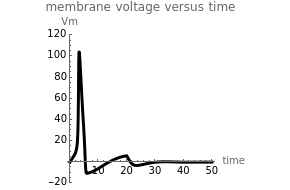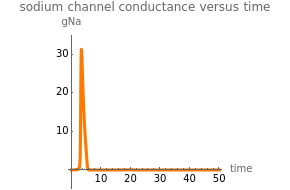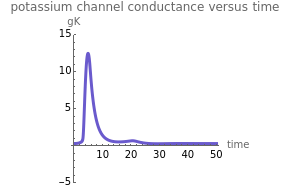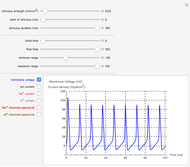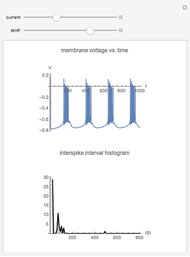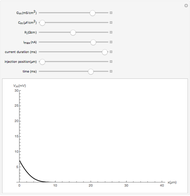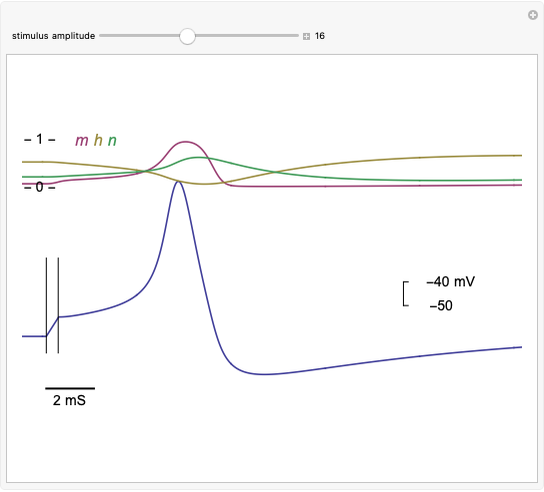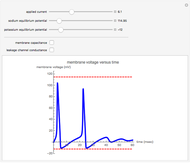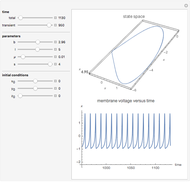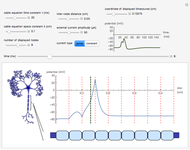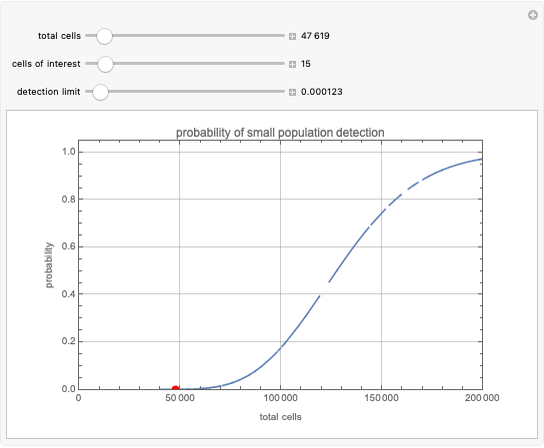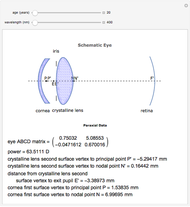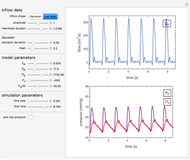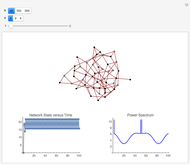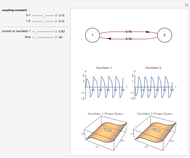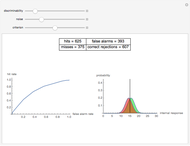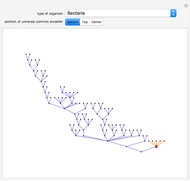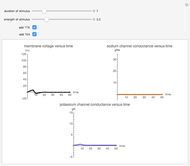Neural Impulses: The Action Potential in Action

Requires a Wolfram Notebook System
Interact on desktop, mobile and cloud with the free Wolfram Player or other Wolfram Language products.
Neurons communicate with each other primarily through a distinctive electrical signal known as the action potential. With a stimulus of sufficient strength, the voltage of the neuronal membrane rapidly increases due to the influx of sodium ions and decreases due to outflux of potassium ions. The action potential can be modeled by solving the Hodgkin–Huxley equations, a set of nonlinear ordinary differential equations. In this Demonstration, you can visualize the effect of stimulus strength (in  ), stimulus duration (in ms), and the chemicals TTX and TEA on the action potential and the conductances of the sodium and potassium channels in the neuronal membrane.
), stimulus duration (in ms), and the chemicals TTX and TEA on the action potential and the conductances of the sodium and potassium channels in the neuronal membrane.
Contributed by: Garrett Neske (March 2011)
Open content licensed under CC BY-NC-SA
Snapshots
Details
In the resting neuron, there is a higher concentration of potassium ions inside the cell than outside, and a higher concentration of sodium ions outside than inside. Within the neuronal membrane are gated sodium and potassium channels, each specific to either sodium or potassium, respectively. In response to a stimulus, both of these channels open, in which case there is an influx of sodium ions down their concentration gradient and an outflux of potassium ions down their concentration gradient. The effect of the influx of sodium ions is to increase the membrane voltage (Vm) and the effect of the outflux of potassium ions is to decrease the membrane voltage. Since sodium channels open more quickly than potassium channels (as seen in the change of conductance as a function of time for sodium channels), an impulse initially results in an increase in Vm. This increase is graded in nature up to a certain point, the threshold. After this point is passed, an action potential is generated, which is seen as an instantaneous increase in Vm. The amplitude of an action potential is always the same regardless of stimulus strength; it is an all-or-nothing phenomenon. Since sodium channels also close more quickly than potassium channels, continued outflux of potassium ions results in a subsequent decrease of membrane voltage, even undershooting the original resting membrane voltage for some time. By increasing the strength of the stimulus, it is clear that the amplitude of the action potential does not change, but the frequency of action potentials increases. Neuroscientists have studied the effect of tetrodotoxin (TTX) and tetraethylammonium (TEA) on the nervous system to learn more about gated membrane channels. TTX blocks sodium channels and TEA blocks potassium channels.
Permanent Citation
"Neural Impulses: The Action Potential in Action"
http://demonstrations.wolfram.com/NeuralImpulsesTheActionPotentialInAction/
Wolfram Demonstrations Project
Published: March 7 2011
